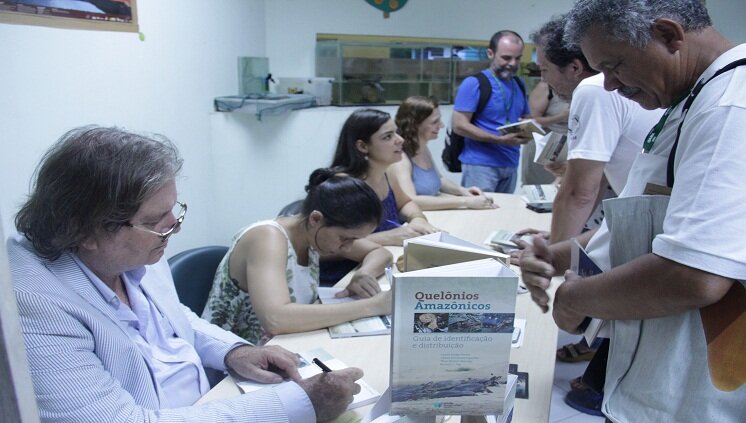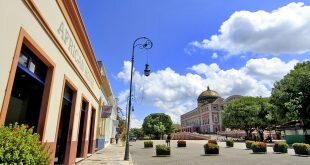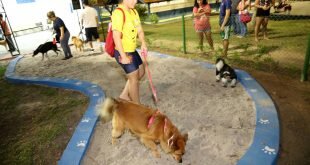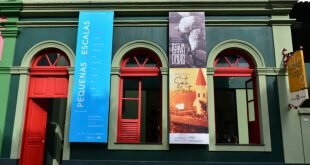Easy to use, the book was designed not only for graduate students and researchers, but also for park managers, lay people and people who are interested in chelonians.

A complete and unprecedented guide that contains identification maps for 18 species of chelonians found in the Amazon. Amazonand a board with life-size pictures of eggs. This is the book "Quelônios Amazônicos: guia de identificação e distribuição launched last Thursday (3) at the National Institute for Amazon Research (Inpa/MCTIC) in partnership with the non-governmental organization Wildlife Conservation Society (WCS Brasil).
"It is the first time in the world that a guide brings as a differential feature photos of turtle eggs in real size, in addition to the distribution maps of the species, as a result of the efforts of Dr. Camilas and Dr. Thais," said researcher Richard Vogt, one of the authors of the book, which brings updated information on taxonomy (identification), biology, ecology, threats and distribution of chelonian species in the Amazon.
The idea of producing the book came in 2013, from the doctorate of Camila Fagundes, PhD in Freshwater Biology from Inpa, who worked with the areas of distribution and suitability of species. The book also compiles the work of Camila Ferrara (PhD in Freshwater Biology from Inpa), who works with communication among chelonians, along with researcher Richard Vogt, a leading expert in freshwater turtle conservation and ecology, and Thais Morcatty (MSc in Ecology from Inpa), who works on assessing the impacts and sustainability of hunting activities and the trade in Amazon turtles.
According to Fagundes, the book brings information about chelonians in the Amazon to assist conservation actions, since the Amazon is one of the places with the greatest diversity of this group and also one of the most endangered vertebrates in the world. "We cannot develop conservation actions if we don't have knowledge of our fauna. Our intention is to collaborate with this knowledge," he said.
The book was funded by the Betty & Gordon Moore Foundation and had an initial print run of 1,000 copies. Those interested in acquiring them can do so at Publisher Inpa (at Inpa's headquarters, on Campus I, located at Bem-te-vi street, s/nº - Petrópolis) or at WCS Brasil's headquarters, which is located on the Mini campus of the Federal University of Amazonas (Ufam), in block H.
In the opinion of the director of WCS Brazil, Carlos Durigan, the great importance of publications among researchers is to spread knowledge. He explains that WCS Brasil has a chelonian conservation program and through this program a partnership was made with Inpa and researcher Vogt to develop the guide with updated information on Amazonian species. "It will be a help for conservation interest groups, and we hope to use this information to make people aware of the need to conserve these species," he said.
For Ufam professor Paulo Andrade, the coordinator of the Pé-de-Pincha project, this is a guide that has been long awaited in academia. "We had guides about chelonians from other nearby countries, but for the Brazilian Amazon this is a complete guide and the first one that comes with identification maps. It is a guide with a simple language that came to fill a gap that existed for the identification of these animals", she said.
According to Camila Ferrara, one of the authors, the book is easy to handle and was designed not only for graduate students and researchers, but also for park managers, lay people and people interested in chelonians. "It is a smaller size book, has a simple language and with the taxonomic key that helps to understand and discover the species," he said.
Recent researches
Inpa's research has found that at least one Amazonian chelonian species, the Amazon turtle, communicates through sound with other individuals of the species both in and out of the water and presents 11 types of sounds in its vocal repertoire with a frequency ranging from 36.4 to 4,000 hertz. This means that it is an audible sound to the human ear. Humans hear between 20 and 20,000 thousand hertz.
 Manaus Ágil tourism and culture of the Amazon
Manaus Ágil tourism and culture of the Amazon




